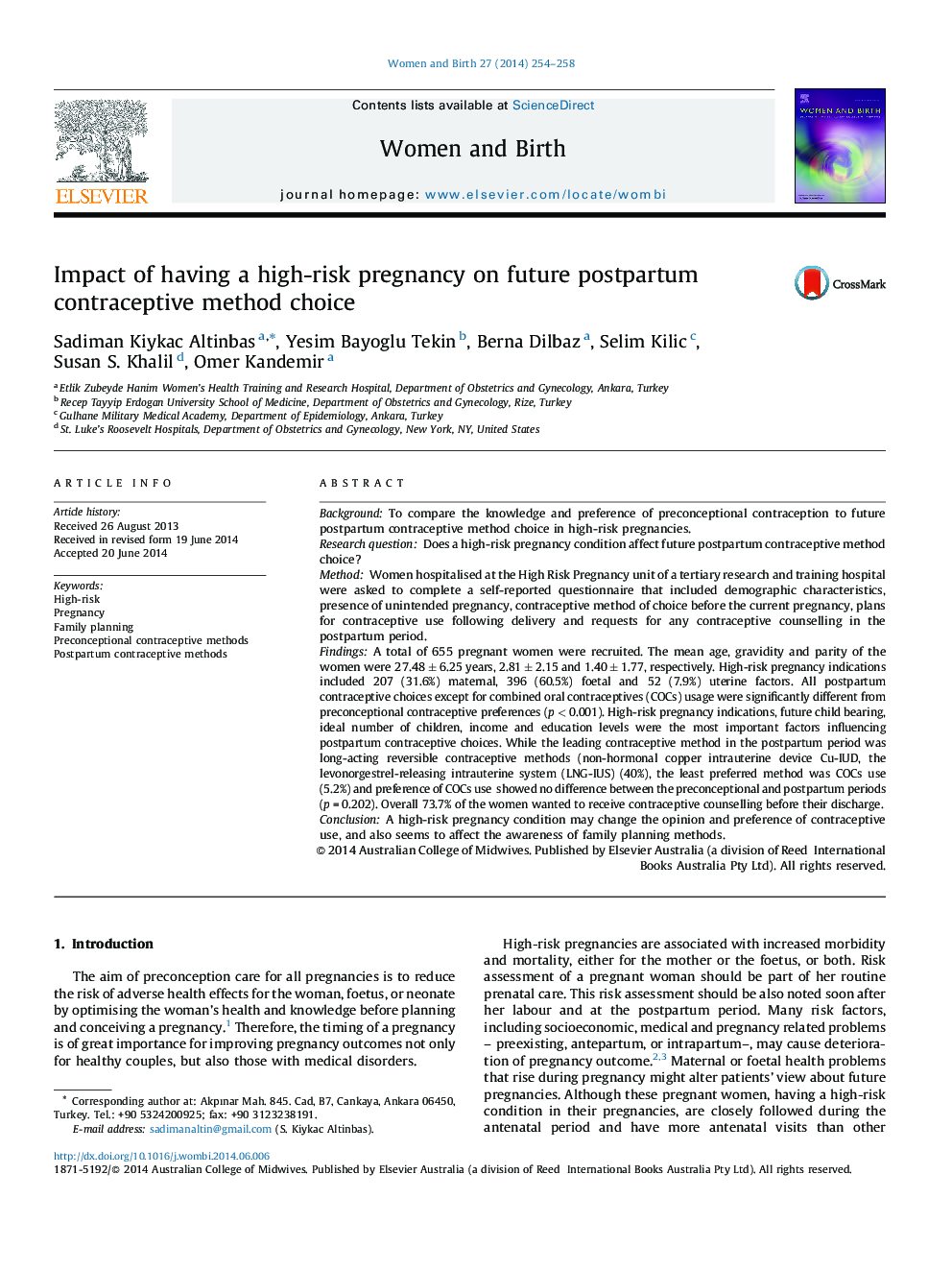| Article ID | Journal | Published Year | Pages | File Type |
|---|---|---|---|---|
| 2635996 | Women and Birth | 2014 | 5 Pages |
BackgroundTo compare the knowledge and preference of preconceptional contraception to future postpartum contraceptive method choice in high-risk pregnancies.Research questionDoes a high-risk pregnancy condition affect future postpartum contraceptive method choice?MethodWomen hospitalised at the High Risk Pregnancy unit of a tertiary research and training hospital were asked to complete a self-reported questionnaire that included demographic characteristics, presence of unintended pregnancy, contraceptive method of choice before the current pregnancy, plans for contraceptive use following delivery and requests for any contraceptive counselling in the postpartum period.FindingsA total of 655 pregnant women were recruited. The mean age, gravidity and parity of the women were 27.48 ± 6.25 years, 2.81 ± 2.15 and 1.40 ± 1.77, respectively. High-risk pregnancy indications included 207 (31.6%) maternal, 396 (60.5%) foetal and 52 (7.9%) uterine factors. All postpartum contraceptive choices except for combined oral contraceptives (COCs) usage were significantly different from preconceptional contraceptive preferences (p < 0.001). High-risk pregnancy indications, future child bearing, ideal number of children, income and education levels were the most important factors influencing postpartum contraceptive choices. While the leading contraceptive method in the postpartum period was long-acting reversible contraceptive methods (non-hormonal copper intrauterine device Cu-IUD, the levonorgestrel-releasing intrauterine system (LNG-IUS) (40%), the least preferred method was COCs use (5.2%) and preference of COCs use showed no difference between the preconceptional and postpartum periods (p = 0.202). Overall 73.7% of the women wanted to receive contraceptive counselling before their discharge.ConclusionA high-risk pregnancy condition may change the opinion and preference of contraceptive use, and also seems to affect the awareness of family planning methods.
